Did you have any question like – What are Algorithms in cryptocurrency? What are mining algorithms? What algorithm is used by Bitcoin? & also why is it important to have a cryptocurrency algorithm?
Then you are at the right place – As we have an in-depth article on how mining works and what is the play of cryptocurrency algorithm.
Cryptocurrencies are usually decentralized virtual currencies. They don’t have any physical existence. And most of the time they don’t even rely on any physical entities to calculate their values. Value of a cryptocurrency is a product of supply and demand.
Because cryptocurrencies have fixed supply, unlike fiat currencies.
Fiat or traditional currencies are also controlled by the respective governments. They have the power of creating new units as well as destroy when needed.
In our traditional economies, there are also central banks. These banks regulate the flow of the monetary units. They also maintain a centralized ledger to settle transactions.
But as I said above cryptocurrencies are decentralized. Meaning no particular body holds the power to govern a cryptocurrency. Each and every investor of a cryptocurrency has rights to vote.
Also, cryptocurrencies usually have public ledgers, easily accessible by anyone. Cryptocurrencies don’t have centralized institutions like banks either.
But cryptocurrencies still need a mechanism to verify transactions. This consensus process can be done in two ways. Either by using a proof of work algorithm and miners to verify and add transactions to the blockchain.
Or by using a proof of stake algorithm and validators who vote to reach a consensus.
In this article, we are going to cover only the mining section. And talk about different mining algorithms used by popular cryptocurrencies.
Contents
WHAT IS CRYPTOCURRENCY MINING?
For a cryptocurrency that uses proof of work for transaction verification, mining is a critical process. Without it, the transactions will remain unsettled.
Not only this but cryptocurrency miners also generate new units of the cryptocurrency.
Miners are special nodes in a cryptocurrency network. They have specialized hardware to solve extremely tedious mathematical problems. And the miner with most “appealing” solution gets the reward. For Bitcoin, currently, it is 12.5 BTC per block.
The whole mining process is very complicated. But I will try my best to break it down to you in the simplest words possible. First of all, the cryptocurrency network collects all the transactions done in a period.
And it creates a block out of these transactions. For Bitcoin, this block generation window is 10 minutes. But for newer altcoins like Monero, this is 1 minute. For Verge cryptocurrency, it is only 30 seconds!
Bitcoin also can handle blocks up to 1MB in size. But newer cryptocurrencies support block size as high as 8MB.
When the network creates a new block, it announces the block to all the mining nodes. Now the real competition begins! Using the raw data from the block (transaction details) as well as the data from the previous block the miners generate hashes.
By using the data from the previous block the new block can be linked to it to continue the blockchain. These hashes are generated by using a cryptographic algorithm.
The miners also use another piece of data when creating the hashes. This data is random and manipulatable – it is called a NONCE or a number that can only be used once. You see the cryptocurrency network has its own requirements regarding how the hash looks.
So the miners need to generate a hash that matches the network’s requirements perfectly. These requirements also change after generation of each new block.
The miners can neither manipulate the transaction details nor the data from the previous block. But it can easily use a new NONCE when the generated hash doesn’t meet the requirements.
The miner who generates the matching hash before anyone else is awarded the reward. The network then adds the newly generated block to the blockchain.
And this is how the mining process works under the hood.
DIFFERENT MINING/ HASHING ALGORITHMS
Now that you know how the whole cryptocurrency mining process works, let us learn about the different hashing algorithms.
Classification Algorithms –
SHA-256 ALGORITHM
So, what is sha 256?
SHA-256 is a widely used and extremely popular hashing algorithm. It was developed by the National Security Agency of the United States.
Other than cryptocurrencies SHA-256 is also used in various other technologies. Some widely used security applications and protocols like TLS, SSL, PGP, SSH also use SHA.
SHA stands for Secure Hash Algorithm. And the SHA-256 standard generates a 256-bit hash. This not only encrypts the data but it also standardizes the size.
Actually, this is a case for all of the hashing algorithms.
The hash rate for SHA-256 is usually computed in the Gigahash per second or GH/s unit.
Popularly known as bitcoin mining algorithm.
COINS THAT USE IT:
The father of all cryptocurrencies, Bitcoin uses SHA-256. Other than it many other cryptocurrencies like Bitcoin Cash, Peercoin, Namecoin, Devcoin, Terracoin also use SHA-256.
HOW TO MINE:
When Bitcoin was first launched in 2009, the competition in mining was extremely low. Because only a handful of people used Bitcoin and even lesser mined it.
So back in those days, anyone with a computer could use their CPU to mine. But then some people realized the hash rate is even faster when mining with GPU.
After GPU mining became very competitive experts probed for more efficient hardware. And this is how FPGA miners came into existence. But they were not very efficient either.
So they were soon switched by ASICs. ASICs are Application Specific Integrated Circuit. They are built for one task only; in this case, only mining a particular cryptocurrency.
Since then ASIC mining rigs have continued to dominate the Bitcoin mining space. So if you want to mine Bitcoin you will have to buy an ASIC mining rig. China-based Bitmain makes the most efficient Bitcoin ASIC miners called Antminer.
You can also try buying cloud mining contracts from trusted companies like Hashflare, Genesis Mining, Hashnet etc.
SHOULD YOU MINE:
In my opinion, a newcomer in the mining industry should avoid mining cryptocurrencies that use SHA-256. Because the initial investment is overwhelming.
Plus the ASICs generate a lot of heat, so you will be needing proper cooling solutions. They also consume loads of electricity. So only get in this field if you can afford all these.
If you have the money to invest and don’t mind risking it, then buy a cloud mining contract instead. Because it will be a lot less hassle.
SCRYPT ALGORITHM
Scrypt is another very popular hashing algorithm. Most of Bitcoin’s immediate successor employed this algorithm. It is much more memory intensive than the SHA-256.
So it dramatically reduces the protection against custom hardware attacks.
As the Scrypt algorithm is more memory intensive, it is harder to design ASIC rigs for it. Scrypt mining hash rate is usually denoted using MH/s unit.
COINS THAT USE IT:
Bitcoin’s immediate successor Litecoin uses Scrypt as its hashing algorithm. Other popular cryptocurrencies like Dogecoin, Novacoin, WorldCoin, Latium, DigitalCoin etc also use Scrypt.
HOW TO MINE:
Just like SHA-256, you can also mine Scrypt with your CPU and GPU. But that will not be profitable at all. The most profitable way to mine is by using an ASIC rig.
There are a lot of ASIC rigs available for Scrypt mining. The most popular ones are from Antminer, A2 Mega, Gridseed etc.
SHOULD YOU MINE:
Just like SHA-256, I don’t recommend mining Scrypt based cryptocurrencies.
DAGGER HASHIMOTO – ETHASH ALGORITHM
The Ethash or Dagger Hashimoto algorithm was specifically designed for Ethereum. The algorithm uses two different hashing algorithm – Dagger by Vitalik Buterin and Hashimoto (hash, shift, and modulo) by Thaddeus Dryja.
The Dagger algorithm is a memory hard hashing algorithm like Scrypt. But it performs better than Scrypt when the hardness is increased to a very high level. But it has some vulnerabilities too. That is why it is used in conjunction with Hashimoto.
In short, we can call it Eth mining. It is Ethereum Mining Algorithm.
Developed by Thaddeus Dryja, the Hashimoto algorithm is IO-bound.
So it limits the mining rate by forcing IO operations like memory read and write.
The Ethash algorithm is memory intensive as well as IO intensive. That is why you cannot build ASIC rigs for Ethash.
Ethash hash rate is denoted using Megahash per second.
COINS THAT USE IT:
The Ethash algorithm was specifically designed for Ethereum.
So no wonder it is used by Ethereum. And as a result, it is also used by Ethereum Classic, UBIQ, Music Coin,etc. Expanse is another cryptocurrency that uses it.
HOW TO MINE:
The most efficient way of mining Ethash based cryptocurrencies is by using a GPU based rig. Particularly, an AMD based GPU mining rig. Graphics cards like AMD RX 480, RX 570, RX 580 provide the best price to performance ratios.
But right now AMD graphics cards are in high demand.
So miners are making a switch to the green side. Cards like GTX 1070, GTX 1070Ti from team Nvidia can also be profitable.
Read –
6 GPU Ethereum Mining Rig Build 2018
RX Vega Vs RX 580 – Which One Should You Choose For Mining?
SHOULD YOU MINE:
You can build profitable Ethash mining rigs for as low as $2000-$2500. So I recommend mining Ethash based cryptocurrencies if you have the amount to invest.
Plus you don’t need a very sophisticated cooling solution for GPU mining. Having a proper ventilation will work wonderfully!
X11 ALGORITHM
Dash cryptocurrency’s core developer Evan Duffield created the X11 hashing algorithm. It uses 11 different hashing algorithms. Hence the name X11.
The X11 hashing algorithm is extremely efficient. The minings rigs consume as much as 30-50% less electricity than Scrypt. This means the hardware also runs much cooler.
Currently, the hash rate is calculated in Gigahash per the second unit.
COINS THAT USE IT:
As I mentioned above the Dash cryptocurrency uses the X11 algorithm. You can also mine CannabisCoin, KarmaCoin, XCurrency using X11 rigs.
HOW TO MINE:
The X11 algorithm was usually mined using GPU based mining rigs. But now there are ASIC rigs available for this purpose. You can mine X11 using ASIC rigs from Antminer, Baikal, Innosilicon etc. The price of these ASIC rigs can be as low as $1500 and as high as $13000.
SHOULD YOU MINE:
I don’t recommend mining X11 if you don’t know what you are doing. I suggest sticking with easier cryptocurrencies.
CRYPTONIGHT ALGORITHM
Cryptonight was originally designed to be used by any CPU. It was implemented in the open-source privacy protocol CryptoNote.
The limiting factor in this algorithm is its IO-bound operations. In this hashing algorithm, every new block depends on all the previous blocks.
Usually, each instance of Cryptonight is around 2MB. This is why you cannot design ASIC hardware for Cryptonight.
Cryptonight hash rate is denoted by Hash per second.
COINS THAT USE IT:
This algorithm was mainly popularized by the privacy-focused cryptocurrency Monero. It is also used in various other cryptocurrencies such as DigitalNote, DarkNetCoin and most recently in Electroneum.
HOW TO MINE:
You can mine Cryptonight using even a mobile device’s CPU. Eletroneum is running a beta test in this regard to examine the potential.
Many sites have used a custom javascript code to mine Monero using their visitors CPU. And it has proved to be very profitable.
But if you want to become a full-time miner then I suggest building a GPU based mining rig. Ideally, you would use AMD Vega 56 graphics cards.
Because they provide the best hash rate among all the other GPU. This is partly because of the High Bandwidth Memory these cards have. You can expect hash rate up to 2000H/s with Vega cards when overclocked and used custom BIOS.
SHOULD YOU MINE:
Yes, I suggest mining Cryptonight based cryptocurrencies. You can mine either Monero or Electroneum. Electroneum is still beta testing their feature. So, for the time being, you may stick to Monero only.
Read –
Build Electroneum / Monero Mining Rig.
EQUIHASH ALGORITHM
Designed by Alex Biryukov and Dmitry Khovratovich of the University of Luxembourg, Equihash is another memory-hard hashing algorithm. It is based on a cryptographic concept called Generalized Birthday Problem.
Being memory intensive it reduces the risk of getting attacked by ASIC rigs. So in the case of Equihash, the hash rate depends mainly upon how much RAM you have rather than your clock speed.
Zcash cites that they use Equihash because “Equihash has very efficient verification. This could in the future be important for light clients on constrained devices, or for implementing a Zcash client inside Ethereum”.
The hash rate is usually denoted by Solutions per second or Sol/s.
COINS THAT USE IT:
As I mentioned above, a very popular cryptocurrency Zcash uses Equihash. Hushcoin, Bitcoin Gold, Verge are other cryptocurrencies that use it.
HOW TO MINE:
The best way to mine Equihash based cryptocurrencies is using Nvidia graphics cards. Nvidia’s GTX 1070 and GTX 1070Ti provide the best bang for bucks!
Read –
13 GPU Profitable ZCash Mining Rig.
8 GPU ZCash Mining Rig Build .
SHOULD YOU MINE:
Yes, you can mine Equihash cryptocurrencies. I suggest mining Zcash and Verge as both of these are very popular. The competition is not that high either. So expect a lower payback period.
FINAL WORDS
I hope I was able to provide useful information in this article. I could not cover all the hashing algorithms. But I made sure I covered the popular (and profitable) ones in this article.
For the curious souls out there, there are other hashing algorithms like Groestl, Lyra2REv2, Blake (2b, 2s, 14r), LBRY, NeoScrypt, Pascal, Skunkhash etc.
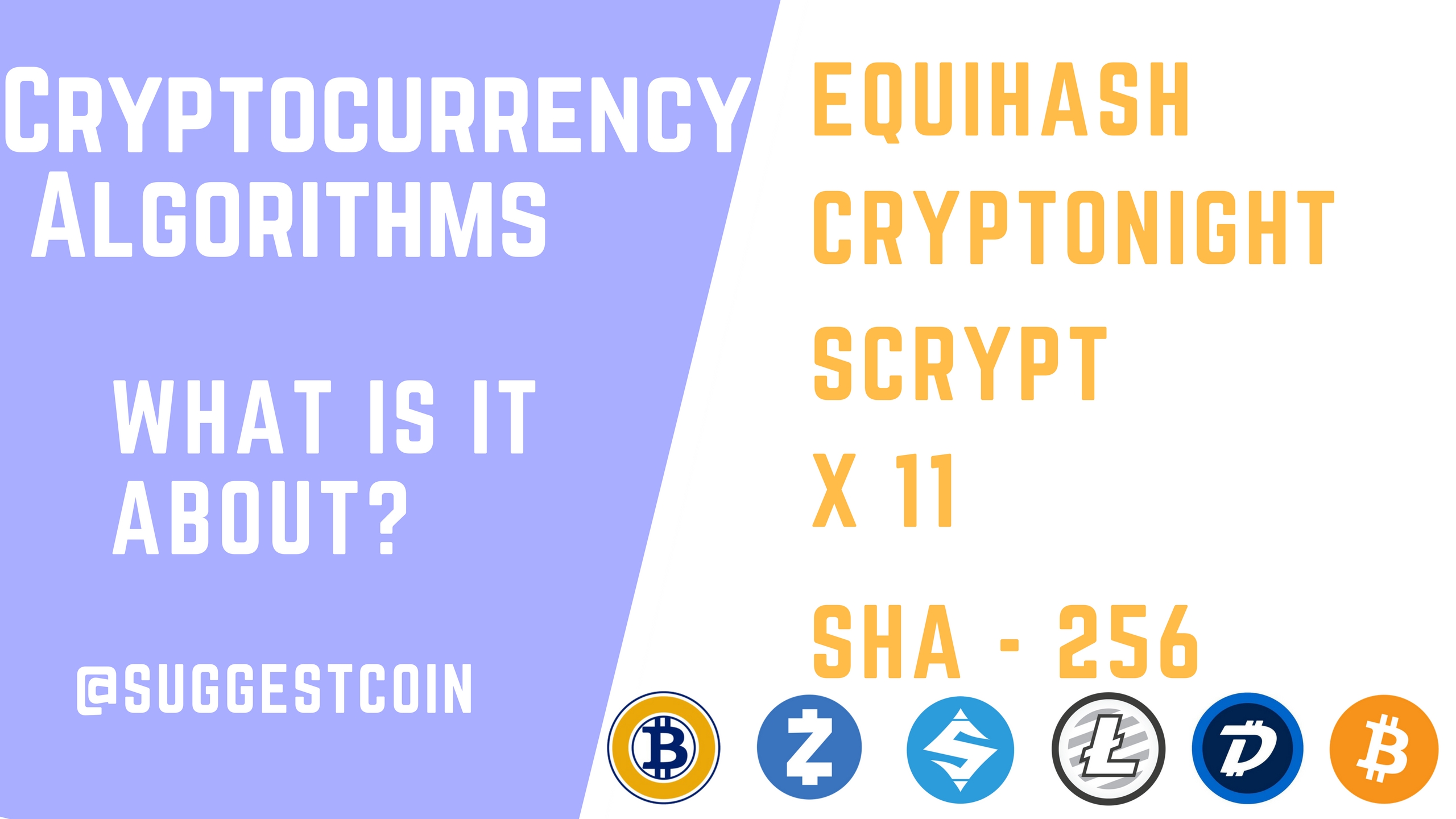


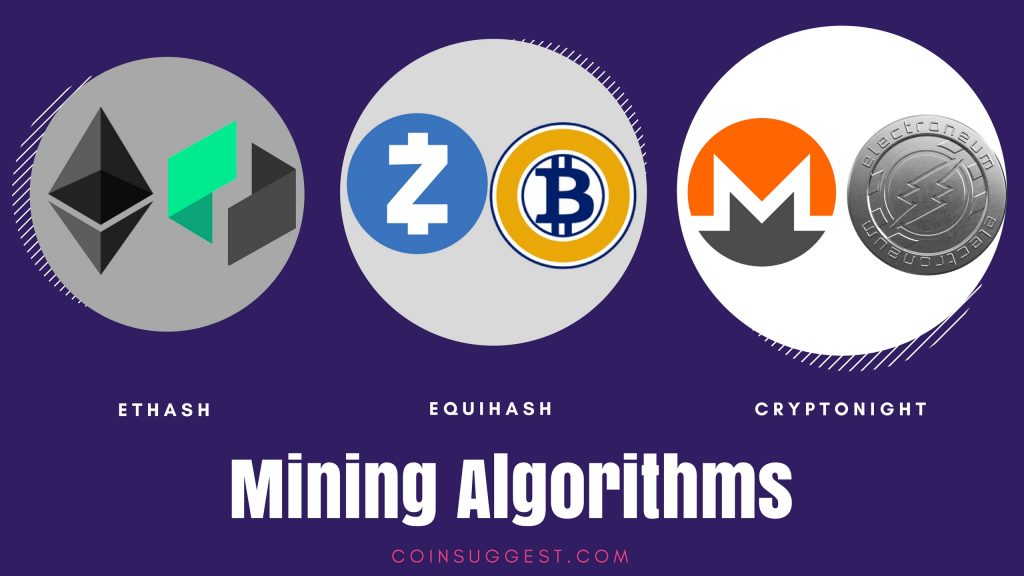
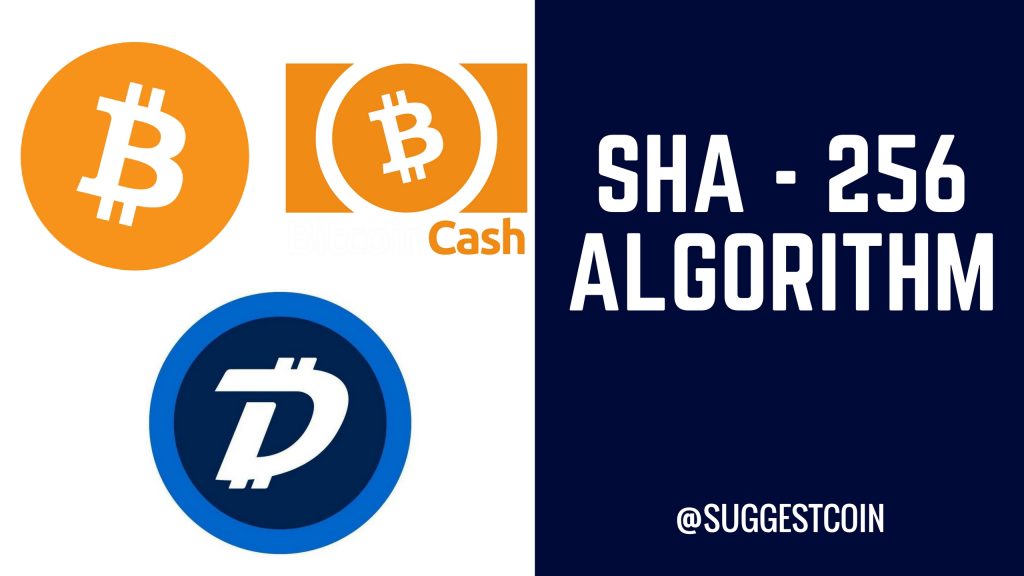
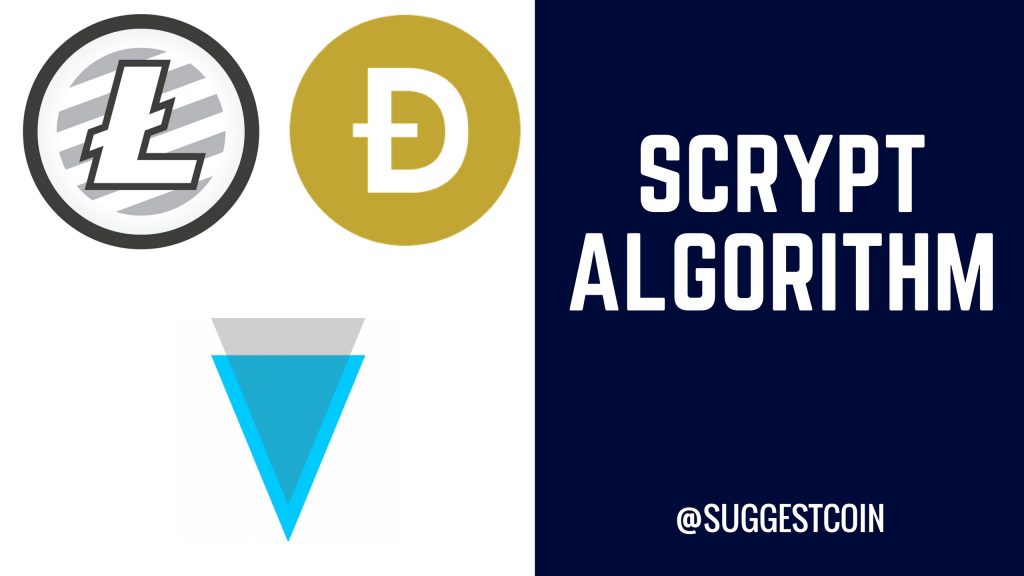
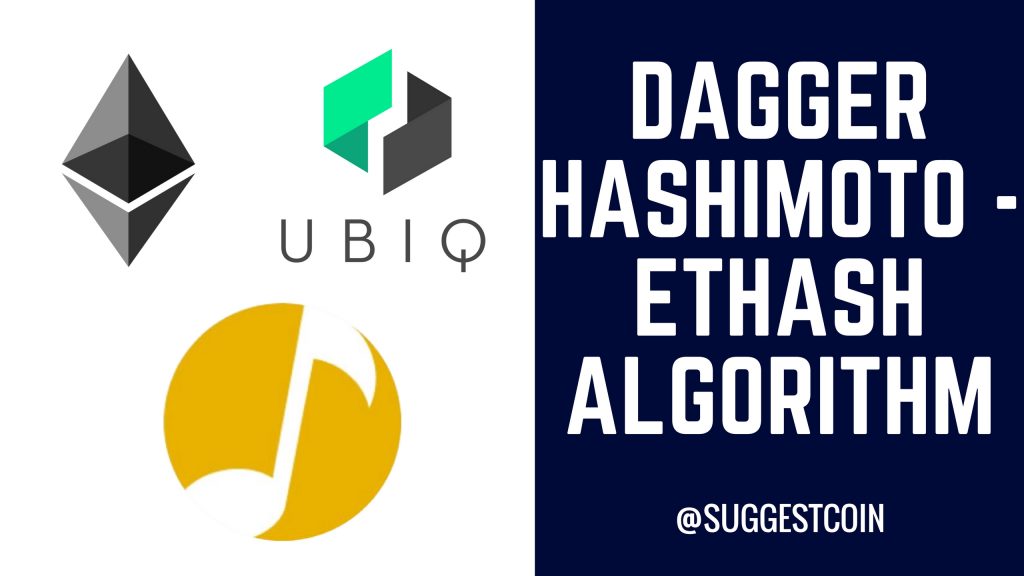
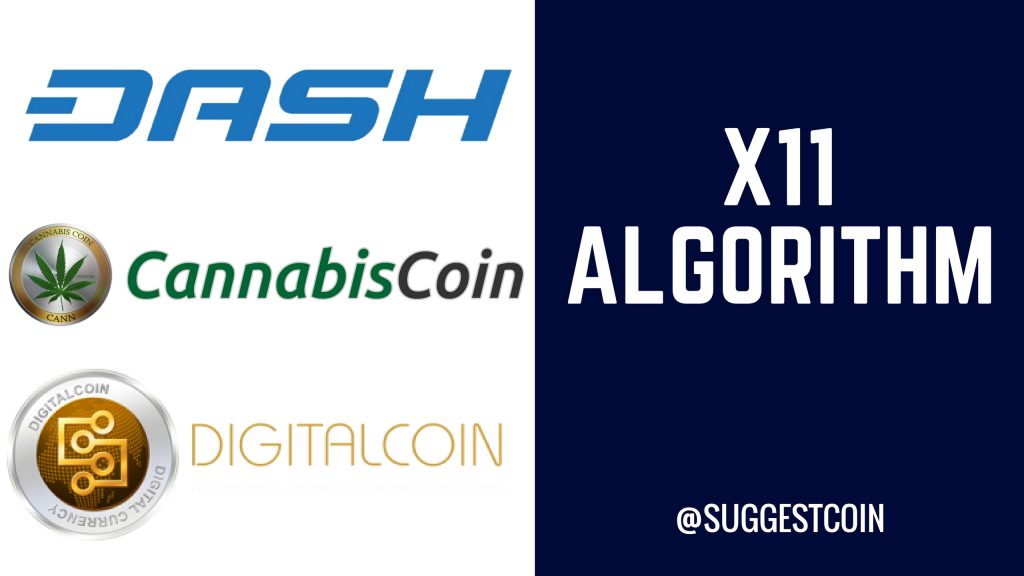
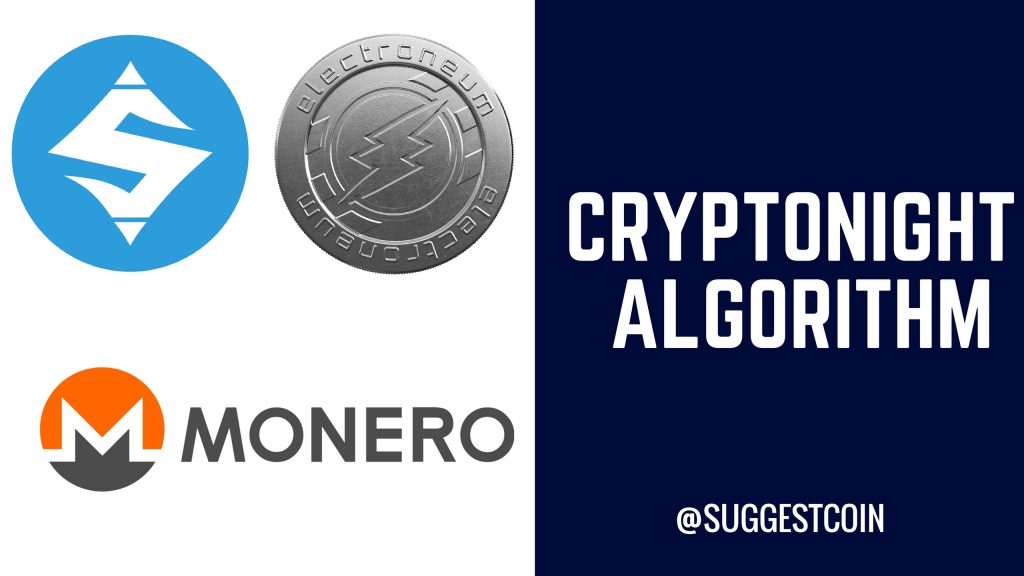
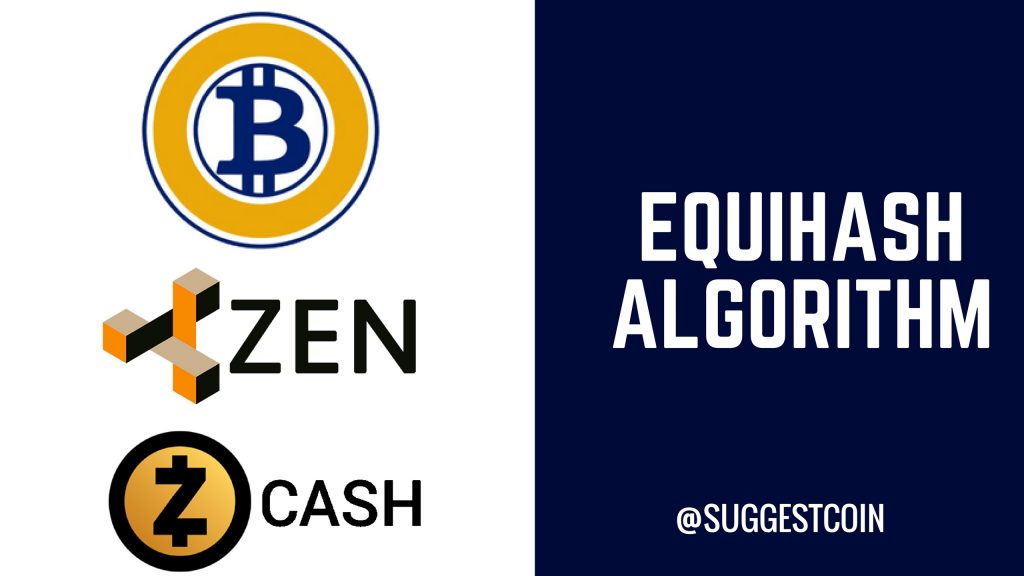
Great job man. You’ve covered all the important hashing algorithms. Keep it up!
Thank You Shafi!!!